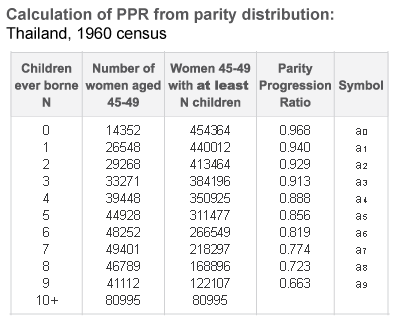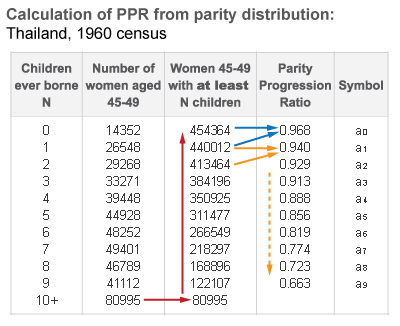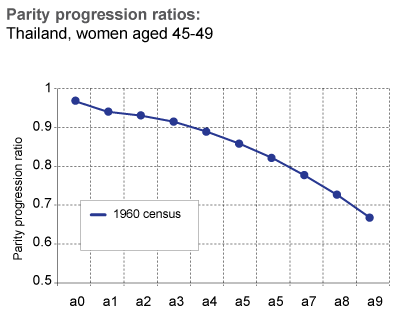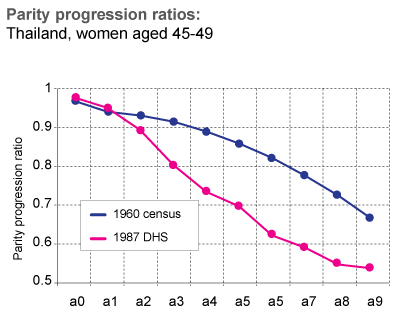Parity Progression Ratios (cont.)
How they are calculated
The table below gives an indication of how PPRs are calculated. It is not a difficult calculation, the main thing to remember is that you are counting women not children.
For the simple PPRs, as described, data requirements and calculation are both amazingly simple. All that is required is a table of numbers of women by parity by age group. It is common in censuses and surveys to ask women the number of children they have ever borne. This data is easily tabulated by the woman’s age group.
NB Children ever borne includes children who have died – it is actually live births. It is not usually necessary to go up to 10 births - usually to birth order 5 or 6 is fine.
- 1960 census: Calculation of PPR from parity distribution
- 1960 census: Table showing order of calculation
- 1960 census: Parity progression
- 1987 DHS: Parity progression




Table 1 shows numbers of women tabulated by numbers of reported children ever borne. Note that this table is for women aged 45-49. It is only these women who provide the data for the conventional PPRs so far described, as with younger women we have no way of telling whether they will go on to have more children.
Column 3 is simply the number of women in column 2 cumulated up from the bottom - this gives the number of women having n or more births (or “at least n” births). The PPR is then calculated by taking successive ratios which give the proportion of women with at least n children becoming women with at least n+1 children.
There is a small problem with how to count multiple births. If the data used as the basis for calculating PPRs is simply from tabulation of “children ever borne” then there is no way of telling which children are multiple births. With the latter data the convention is to ignore the problem and accept that multiple births are a small source of error. If data is drawn from more sophisticated primary data e.g. a birth history taken in a survey, then the convention is to count multiple births as single births - because PPRs are about choice and there is no choice involved with multiple births. Either way the error is small.
We have already noted that these PPRs are related to completed family size (CFS). Indeed CFS, which is the TFR of a cohort who have completed their fertility, can be calculated by a rather clumsy formula made up of PPRs:
CFS (Cohort TFR) = a0 + a0.a1 + a0.a1.a2 + a0.a1.a2.a3 + a0.a1.a2.a3.a4 + ...
A few moments thought should convince you that this formula is perfectly sound but luckily it is not often needed.